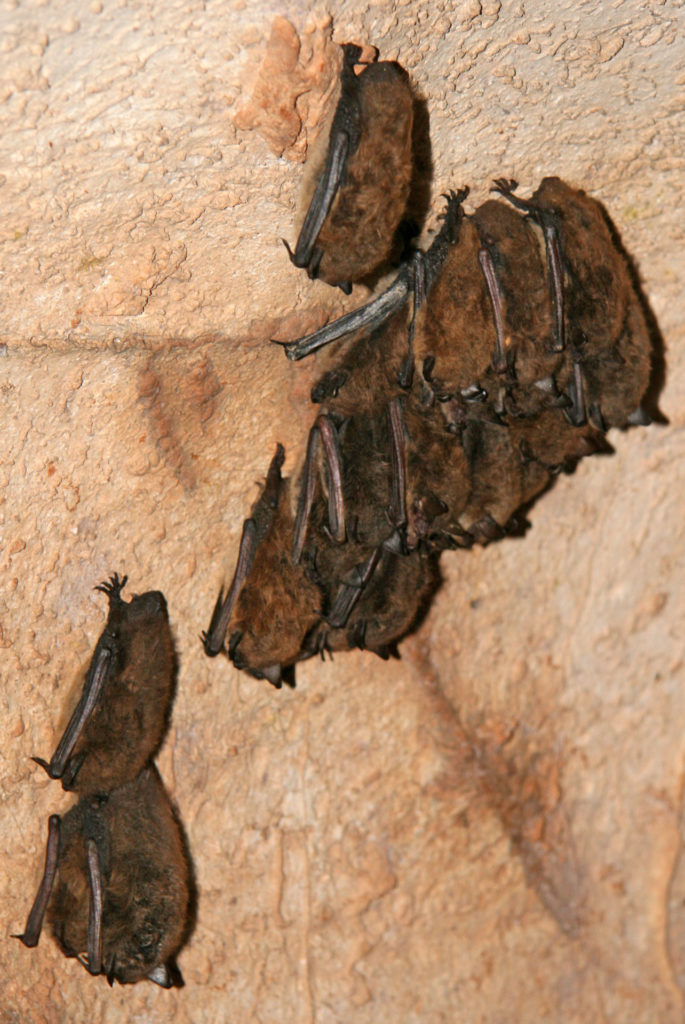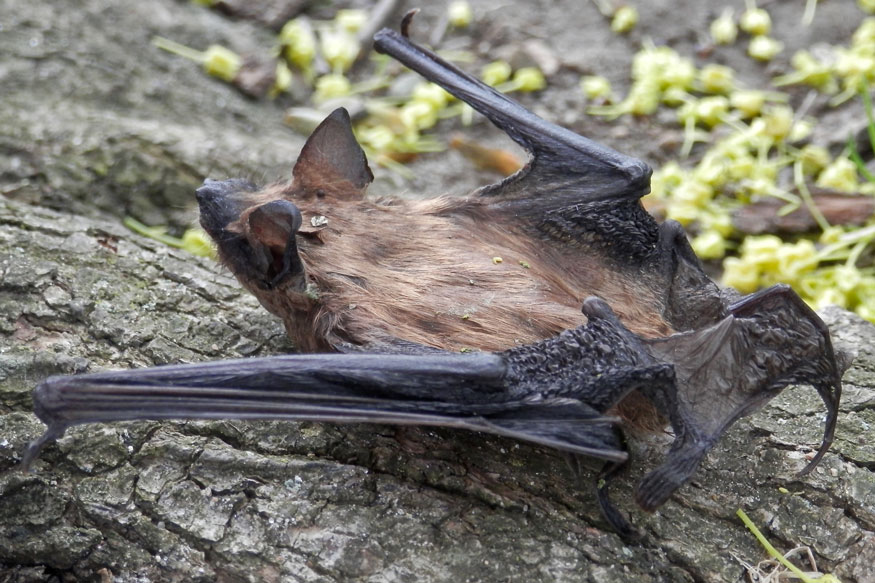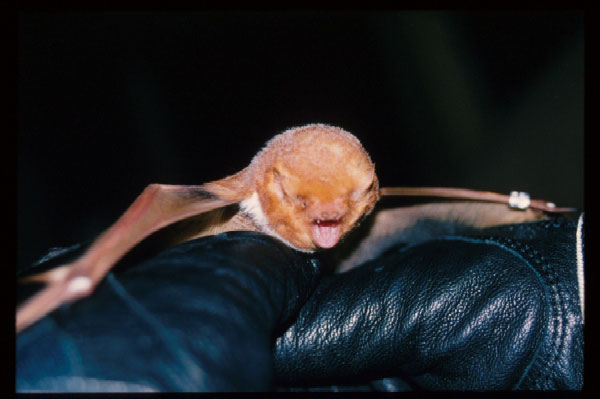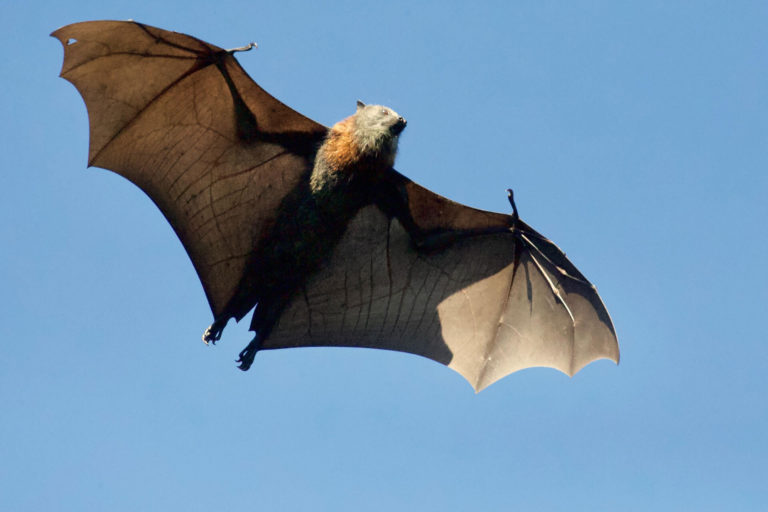All bats aren’t bloodsucking fiends. As a matter of fact, vampire bats don’t even live in this area (you will find vampire bats in Mexico, parts of the southern states, and South America). In the Black Hills, there are five main attractions where locals and tourists can find these sneaky nocturnal creatures: Black Hills Caverns, Jewel Cave, Rushmore Cave, Wind Cave, and Wonderland Cave.
One of the most common mammals found at these locations, bats are actually quite beneficial. Often misunderstood, bats have great significance in our ecosystem. Along with bees, several bat species are pollinators, and most bats are insectivorous, which means they help control the population of harmful insects for crops and farmers. Some bats can effectively eat as many as 1,200 insects in only an hour of feeding. Without bats, the U.S. would have to invest in more than three billion dollars worth of pest control! Bats are also really important as a food source to other animals in the ecosystem like hawks, falcons, owls, weasels, cats, raccoons, and more. Their droppings can serve as fertilizer, too!
In the Hills
There are more than 40 unique species of bats in the nation and more than 1,000 worldwide. Eleven of these have been found in the Hills.
- Myotis ciliolabrum (western small-footed myotis). This bat is the smallest in the Black Hills and is very gentle when handled properly.
- Myotis evotis (long-eared myotis). Total ear length is the best distinguishing feature for these bats; their ear length is about half an inch to an inch (17-22mm).
- Myotis lucifugus (little brown myotis). Common throughout the U.S., this species is the current record holder for age longevity at over 34 years!

- Myotis septentrionalis (northern myotis). This bat has been routinely recorded as having an aggressive attitude. If you point a flashlight in their direction, these bats tend to vocalize more than others.
- Myotis thysanodes pahasapensis (fringed myotis). The common name is derived from the fringe of conspicuous coarse hairs around the free edge of the uropatagium – the membrane that extends between the thighs of a bat and commonly includes the tail. The ears of this bat are also noticeably longer than other myotis species.
- Myotis volans (long-legged myotis). Hibernating in abandoned mines, caves and trees or rock crevices, this species is one of the more common ones found in the Black Hills.
- Corynorhinus townsendii pallescens (formerly Plecotus t.p.; townsend’s big-eared bat). When awake, this bat has been said to have very long rabbit-like ears. Its diet is composed almost exclusively of moths. This species is also the most frequently encountered underground species within the Black Hills!
- Eptesicus fuscus (big brown bat). Because of its moderately larger size, this bat lacks the acrobatic and evasive abilities of smaller myotis species. It is still very strong and fast flying.

- Lasionycteris noctivagans (silver-haired bat). The fur is dark, usually black, with silver-tipped hairs scattered throughout. This species is considered seasonal, arriving in spring and flying south in the fall.
- Lasiurus borealis (eastern red bat). One of the more colorful bats, the Lasiurus borealis is reddish-orange with long, pointed wings. It is also the least common bat found in the Black Hills.

- Lasiurus cinereus (hoary bat). Considered the region’s largest bat, the average forearm length is just over two inches (52.69mm) and average weight is slightly under an ounce (27.6 gm). This bat is also considerably more colorful, with a mixture of browns and blacks and frosted white tips. You will want to be careful around this one; the species commonly hisses and emits a spitting sound when it’s disturbed and displays a menacing, open-mouthed defensive posture. Such posturing is no bluff.
Interested in learning more about these specific species? Read South Dakota’s Game, Fish and Parks report here.
Myth Busters
A lot of misinformation and misconceptions are spread concerning our flying little friends. Here are a few myths that have been busted throughout years of research.
Bats are Blind. False. In fact, bats can see quite well, but they do have an advanced way of seeing through their echolocation which has nothing to do with their eyes and everything to do with their ears. Bats can actually see three times better than we can! Echolocation is a method that bats use to locate objects using the reflection of sound.
Fun fact: Echolocation has inspired several technological advances in engineering like drones!
All Bats are Rabid. Not even close. Did you know only five to six percent of bats test positive for rabies? While bats are the animal most often reported for having rabies (32.2 percent of all cases in 2017), raccoons, skunks, and foxes follow close behind them.
Bats Like to Attack. Again, false. It may look like they’re swooping down to attack your head, but bats need to drop down to get some lift and start to flap because they hang upside down for the majority of the day.
Bats at Home are Bad Luck. Only if you believe in old vampire legends! But even then, because vampire bats don’t live in this area, you are safe from any vampire bats or attacks.
IMPORTANT NOTICE: The bats in this area are susceptible to White-Nose Syndrome. This disease is spreading across the entire United States and killing bats at a rapid rate. While it does not affect humans at all, people can carry the disease and spread it to wildlife. Since its discovery in 2006, the disease has knocked out more than five million bats.
To prevent the spread, people are asked to stay on the designated decontamination mat when entering and exiting cave tours. The Black Hills National Forest posted the following update when it was discovered in the hills:
“‘Now that white-nose syndrome is here in South Dakota, threatening bats, it is more important than ever for people to avoid disturbing bats and to take precautions to prevent further spread of the fungus,’ said Silka Kempema biologist with South Dakota Game, Fish and Parks.
State and federal wildlife and habitat managers are asking for the public’s help in limiting WNS spread by adopting the following precautions:
Stay out of caves, mines, and areas that are closed.
Decontaminate your caving and hiking gear and boots. Do not reuse gear that has been used in WNS-affected areas.
Visit www.whitenosesyndrome.org for more information.”

